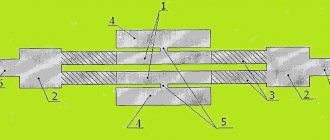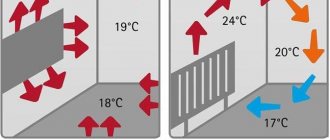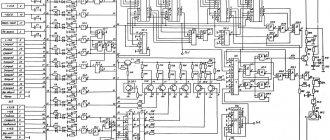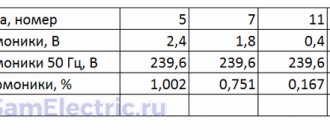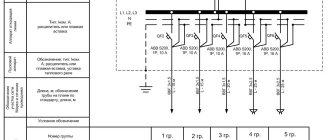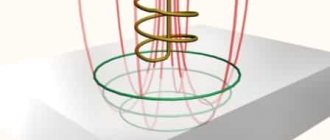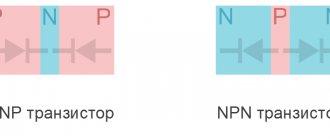To denote retarded processes, a special name is used: hysteresis; what it is in electrical engineering can be understood after studying the information presented below. The general definition implies the presence of a certain delay to external influence. Changing the system depends on its previous state. This phenomenon differs from inertia in the nonlinearity of operating characteristics.
The hysteresis loop demonstrates the change in magnetization of a sample made of ferromagnetic material
General concepts of hysteresis
The following practical examples illustrate the basic definitions of the process. What is hysteresis in economics? When considering this area of activity, you can study the standard organization of export of goods. To develop a new territory, you need to perform several actions:
- explore potential interest in certain products through market research;
- check for competitive offers;
- create a dealer network (sales and technical service);
- provide primary supply;
- conduct an advertising campaign.
At the initial stage, you will have to make quite a lot of effort. Further, a well-established trading mechanism will bring profit in operating mode. At this stage, less expensive control functions become more important. If the business needs to be moved to another region, the process is repeated in a similar way with a certain time delay. The above graph clearly demonstrates the change in economic parameters using the example of physical quantities.
Substances and their magnetic properties
Samples made from different materials react in a special way to the influence of a magnetic field. The main differences are determined by magnetic permeability (μ). This is a coefficient (multiplier) showing the difference in the vector value of induction ( B ) in this substance compared to vacuum ( B0 ) :
- diamagnetic materials (μ≤1) – copper, water, hydrogen;
- paramegnetics (μ≥1) – ebonite, oxygen, platinum;
- ferromagnets (μ significantly greater than 1) - cobalt, nickel, iron.
Magnetic core
The last group is distinguished by magnetism, which remains after removal of external influences.
For your information. When a ferromagnet is heated to a certain level (Curie point), the magnetic properties disappear. For iron this figure is +770°C.
Magnetization (M) can be defined as the difference between inductions (B-B0), or expressed through permeability by the following formula:
M = μ* B0 - B0 = (μ-1)*B0.
Definition of the concept
The word “Hysteresis” has Greek roots and is translated as lagging or lagging. This term is used in various fields of science and technology. In a general sense, the concept of hysteresis distinguishes the different behavior of a system under opposite influences.
This can be said in simpler words. Let's say there is some kind of system that can be influenced in several directions. If, when acting on it in the direct direction, after stopping the system does not return to its original state, but is established in an intermediate state, then in order to return it to its original state, it is necessary to act in a different direction with some force. In this case, the system has hysteresis.
Sometimes this phenomenon is used for useful purposes, for example, to create elements that operate at certain threshold values of acting forces and for regulators. In other cases, hysteresis has a detrimental effect; let’s consider this in practice.
Types of hysteresis in physics
What is the source of the magnetic field
To solve practical electrical problems, magnetic hysteresis should be studied in detail. A complete understanding of similar phenomena based on physical principles can be obtained after considering ferroelectric and elastic processes.
Magnetic hysteresis
According to the basic definition, this phenomenon refers to the lag of the magnetization (M) of a material from the changing influence of an external field. For the experiment, you can assemble a circuit in which current is passed through a solenoid. The voltage level (H) is adjusted using a parallel variable resistor. The core is made of ferromagnet.
Experimental setup diagram
Important! The presented dependencies should be considered in conjunction with the graph in the first figure.
Before the experiment begins, the sample has neutral characteristics. Magnetization and intensity are zero, the magnetic moments of the domains are randomly located. After closing the circuit and increasing the current, the voltage increases. The figure shows how at the same time the direction of the moments changes. The induction in the sample ( B ) is equal to the sum of the voltage and magnetization with a correction factor (μ0):
B = μ0*H + μ0*M.
At a certain level, the μ0*M indicator increases to a maximum value. A subsequent change in the external field strength does not have any effect on it.
Ferroelectric hysteresis
The reason for the special shape of the graph in this example is the formation of polarization without the application of external field forces. This effect is observed in a certain temperature range. The corresponding materials are called ferroelectrics.
Ferroelectrics
The first figure shows the hysteresis loop, where the places are marked:
- point “a” – saturation state;
- Pc – residual polarization;
- -Ec – coercive force.
The second part (2) shows the chaotic (a) and directional (b) arrangement of domains. Orientation along electrostatic field lines is used to create capacitors with variable capacitance.
For your information. As in other substances, when the temperature rises to the level of the Curie point, magnetization disappears.
Elastic hysteresis
This phenomenon is explained by the special mechanical properties of individual materials. They retain the shape created by a fairly strong impact. A typical example is the manufacture of metal products using forging.
Error
In electronics, hysteresis can also harm the operation of some devices. This effect is called hysteresis error. Often this effect can be observed with a motion sensor. For example, when an object moves from point A to point B, the sensor is triggered within 1 second. And when moving in the opposite direction while maintaining the trajectory, the sensor turns on with a slowdown of 2 seconds. The reason for this phenomenon lies in the difference in output signals for input signals, which differ in magnitude when decreasing and increasing. When moving from point A to point B, the value of the incoming signal has a difference of 30 MB from the value of the same signal when moving in the opposite direction. Taking into account the sensor sensitivity of 15 MB/mm, the hysteresis will be 3 mm. The difference in signal magnitude depends on changes in air temperature, external interference, the effect of friction or contact bounce.
The mechanism of occurrence of the hysteresis loop
Hall effect
To study this process in detail, it is necessary to analyze individual sections of the curve indicating the change in induction. Description of the main stages:
- first, a shift in the boundaries between neighboring domains is observed;
- then the orientation of the moments changes quickly in the direction of the external field lines;
- at this stage, the new location of the boundaries becomes irreversible;
- this area is characterized by the growth of individual domains to a maximum size, the magnetic moments are located in exact accordance with the lines of the influencing field;
- the final section shows the absence of influence on the magnetic moments of the tension created by the solenoid.
If you reduce the force parameters of the external field, a hysteresis loop is formed, which can be shown in the first picture (in the direction of the arrows). Please note that the curves are different. The induction delay corresponds to the basic principles of the phenomenon. At zero voltage B≠0. This quantity is called residual induction. This feature explains the understandable process of creating a permanent magnet. The core retains appropriate properties even after the power source is turned off.
Magnetization can be removed by raising the temperature to the Curie point of a particular material. A similar result is obtained using an appropriate external force field (-Hc). This tension creates a coercive force sufficient to demagnetize a steel or other ferromagnetic core. A completely completed cycle is called a magnetic hysteresis loop.
Feedback. Feedback loop and self-regulation. Concept by Norbert Wiener. Cybernetics and society.
Modern cybernetic devices, machines and apparatuses differ significantly from the clockwork mechanisms of Descartes. The critical difference is the presence of automatic control systems (ACS), based on the feedback concept developed by Norbert Wiener.
According to Wiener's concept, a feedback loop is a ring system of causally related elements, in which the initial influence spreads along the nodes of the loop so that each element influences the next one until the last of them “brings a message” to the first element of the loop.
The consequence of such an organization is that the first link (“input”) is influenced by the last (“output”). This allows for self-regulation of the entire system, since the initial influence is modified each time it bypasses the entire loop. Feedback, according to Wiener, is “controlling a machine based on its actual rather than expected behavior.”
In a broader sense, feedback has come to mean the transfer of information about the outcome of any process or activity to its original source.
To illustrate the principles of the feedback loop, Wiener gave an example with a helmsman - one of the simplest examples of a feedback loop. When a boat deviates from a set course, say to the right, the helmsman evaluates the deviation and then counteracts it by turning the rudder to the left. This reduces the boat's deflection and can even cause it to overshoot and veer to the left. At some point during the movement, the helmsman makes a new assessment of the boat's deviation, implements a new counteraction, evaluates the deviation again, and so on. Thus, in maintaining the boat's course, he relies on constant feedback, with the actual trajectory of the boat constantly fluctuating relative to the set direction. The skill of boat handling is to make these vibrations as inconspicuous as possible.
A similar feedback mechanism works when we learn to ride a bicycle. At first, when we first learn to ride, it can be difficult for us to follow feedback due to constant changes in balance. Accordingly, it is difficult for us to control a bicycle. Since the front wheel of a beginner, as a rule, yaws a lot. But as skill increases, the brain begins to quickly track, evaluate, and more accurately respond to the movements of the bicycle and our hands, effective feedback reduces the vibrations of the front wheel, and the bicycle moves along the desired path, maintaining the required balance.
We know that self-regulating machines containing feedback loops existed long before the advent of cybernetics.
For example, the centrifugal steam engine governor, invented by James Watt at the end of the eighteenth century, is a classic example, and the first thermostats were invented even earlier.
The first clear and detailed discussion of feedback loops appeared in a paper by Norbert Wiener, Julian Bigelow, and Arturo Rosenbluth published in 1943 entitled “Behavior, Purpose, and Teleology.” In this pioneering work, the authors not only introduced the idea of circular causation as a logical pattern underlying the technical concept of feedback, but also applied it for the first time to a model of behavior in living organisms.
Taking a strict behaviorist position, the authors argued that the behavior of any machine or organism characterized by self-regulation through feedback can be called “goal-directed” because such behavior pursues some goal. They illustrated their model of goal-directed behavior with numerous examples - a cat catching a mouse; the dog picks up the trail; a person takes a glass from a table, etc. - and analyzed these examples in terms of the circular feedback patterns embedded in them.
Norbert Wiener and his colleagues considered feedback an essential mechanism of homeostasis—self-regulation that allows living organisms to maintain themselves in a state of dynamic equilibrium.
Although Walter Cannon introduced the concept of homeostasis ten years earlier in the famous book “The Wisdom of the Body”, and also gave a detailed description of many self-regulating metabolic processes. However, he never explicitly identified the closed causal loops contained in them.
Feedback and feedback loop. Concept by Norbert Wiener.
Thus, the concept of feedback introduced by cybernetics has led to a new understanding of many of the self-regulating processes inherent in life. Today we understand that feedback loops are ubiquitous in the living world because they are an integral part of the nonlinear networks that characterize living systems.
Positive and negative feedback.
Cybernetics distinguishes between two types of feedback: balancing (or negative) and reinforcing (or positive) feedback.
Since the special meanings of "negative" and "positive" in this context can be easily misleading, they should be explained in more detail.
A causal link and influence is defined as positive if a change in A (input) leads to a change in the same direction in B (output): an increase in A entails an increase in B, and a decrease in A leads to a decrease in B.
A causal link is defined as negative if the change in B occurs in the opposite direction, that is, B decreases when A increases and increases when A decreases.
It should be remembered that the symbols “+” and “-” do not mean increase or decrease, but the relative direction of change of related elements: “+” means the same direction, and “-” the opposite.
The reason the + and - symbols are so useful is that they provide a very simple rule for determining the general nature of the feedback loop. It will be self-balancing (negative) if it contains an odd number of negative connections.
Feedback loops often consist of both positive and negative causal connections, and then their overall nature is easily determined by simply counting the number of negative links in the loop.
Norbert Wiener's chosen examples of boat and bicycle control are ideal for illustrating the concept of feedback because they relate to well-learned human experience and are immediately understood.
To illustrate the same principles of self-regulation in mechanical devices, Norbert Wiener and his colleagues often used one of the earliest and simplest examples of feedback in engineering—the centrifugal governor of a steam engine.
The centrifugal governor of a steam engine consists of a rotating axle with two weights ("flywheels") attached to it in such a way that centrifugal force causes them to move apart as the speed of rotation increases. The regulator is located on top of the steam engine cylinder, and the weights are connected to a valve that shuts off the steam when the weights move apart. The steam pressure controls the engine, the engine controls the flywheel. The flywheel, in turn, controls the controller described above, and thus closes the cause-and-effect cycle.
Feedback and feedback loop. Cybernetics and sociology.
The significance of Norbert Wiener's concept for sociology.
Norbert Wiener was convinced that feedback was an essential component of modeling not only living organisms, but also social systems. In the book “Cybernetics” he wrote:
“There is no doubt that the social system is an organizational structure like the individual, that is, it is united by a system of communication, and it has dynamics in which circular processes such as feedback play an important role.”
It was the discovery of feedback as a general pattern of life, applicable to organisms and social systems, that sparked Gregory Bateson and Margaret Mead's excited interest in cybernetics.
Throughout the history of social sciences, many metaphors have been invented to describe self-regulatory processes in social life. The most famous are the “invisible hand” that regulates the market in the economic theory of Adam Smith, the “checks and balances” in the US Constitution, as well as the interaction of thesis and antithesis in the dialectic of Hegel and Marx.
All the phenomena described by these models and metaphors necessarily involve circular patterns of causality, which can be represented as feedback loops - and yet none of their authors has identified this essential fact.
While circular logical patterns of self-balancing feedback in social life were not noticed until the advent of cybernetics, the pattern of self-reinforcing feedback, colloquially called a “vicious circle,” was known hundreds of years ago. This powerful metaphor describes an unfavorable situation of self-deterioration in a circular sequence of events.
Perhaps the circular nature of such self-reinforcing feedback loops was recognized much earlier because their consequences are much more dramatic than the self-balancing, negative feedback loops that are widespread in the living world.
There are other familiar metaphors for describing the effect of self-reinforcing feedback on social situations. One of the well-known examples is “self-inflicted trouble,” when initially unfounded fears push a person to actions, as a result of which these fears become justified and justified; Another example is the “agitwagon effect,” when a dubious movement receives social support only due to the growing number of its supporters.
Feedback and feedback loop. Cybernetics and sociology.
Despite the fact that self-reinforcing feedback is widely imprinted in folk wisdom, it played virtually no role in the early stages of the development of cybernetics.
Cybernetics from Norbert Wiener's circle recognized the existence of these phenomena, but did not try to delve deeper into their essence. Instead, they focused their attention on the self-regulating processes of homeostasis in living organisms. Indeed, pure reinforcing feedback is rarely found in nature, since it is usually balanced by negative feedback loops that limit increasing tendencies.
In any ecosystem, for example, each species has the potential to increase exponentially in its numbers, but this tendency is controlled by various balancing interactions within the system itself. Exponential growth can only occur in the event of severe disturbances in the ecosystem. Then some plants turn into “weeds”, some animals into “pests”, and some species are simply exterminated - and now the balance of the entire system is threatened.
In the 1960s, anthropologist and cyberneticist Magoro Maruyama undertook the study of self-reinforcing, or “deviation-reinforcing,” positive feedback processes. In his famous paper “The Second Cybernetics,” Marogo introduced feedback diagrams in which he labeled their causal nodes with “+” and “-” signs, and used these successful notations to analyze in detail the interaction of negative and positive feedback processes in biological and social phenomena. He thus linked the cybernetic concept of feedback with the concept of reciprocal causation, which had by then been developed by social scientists, and thereby greatly contributed to the spread of the influence of cybernetic principles on social thought.
From the perspective of the history of systems thinking, one of the most important aspects of cyberneticists' extensive study of feedback loops was the recognition that they reflect organizational patterns. Circular causality in a feedback loop does not at all imply that the elements of the corresponding physical system are connected in a ring. Feedback loops are abstract patterns of relationships embedded in the physical structures or activities of living organisms. For the first time in the history of systems thinking, cybernetics drew a clear boundary between the pattern of organization of a system and its physical structure.
This distinction turned out to be extremely important for the modern theory of living systems!
Norbert Wiener is the man who saw feedback for the first time!
Feedback. Feedback loop and self-regulation. Concept by Norbert Wiener. Cybernetics and sociology.
Women's site I am the most beautiful.rf (i-kiss.ru)
Author: Gerasimov German Vladimirovich
Share with friends on social networks:
Other news:
- Zavidovo. Buy land in Zavidovo.
- Stadium. The history of the appearance of stadiums.
- Land for sale in Anapa. Buy land near Anapa.
- Exploration of the Moon. Russian-Chinese lunar program.
- Boychenko Semyon Petrovich - King of Butterfly.
- Nagan system revolver. 3-line revolver model 1895.
- Brezhnev Leonid Ilyich. The era of Brezhnev.
- Khrushchev Nikita Sergeevich
- Beria Lavrenty Pavlovich
- Ampoulomets. History of the use of ampoules.
- Suez crisis. Suez War.
- Kollontay Alexandra Mikhailovna
- Fritz Schmenkel - Hero of the Soviet Union.
- Tutberidze Eteri Georgievna
- Igor Talkov - I will be back, gentlemen Democrats!
- Sinking panties. The history of the band Singing Cowards.
- Vigorous wine. Invigorating wine.
- Tair Salakhov buy paintings. Tair Salakhov sale of paintings.
- Blanching. Why is blanching done?
- Replacing the lens of the eye. Lens replacement surgery.
- Levi Strauss & Co. History of the brand and company.
- Molotov Vyacheslav Mikhailovich
- Sverdlov Yakov Mikhailovich
- Jet Institute. The history of the creation of the jet institute.
- Tukhachevsky Mikhail Nikolaevich
- Dzerzhinsky Felix Edmundovich
- Problems with stool! Types of constipation. Constipation medications. How to normalize intestinal function?
- Kidney problems. Urolithiasis disease. Renal colic. What to do?
- People of Donbass! Take us home, Motherland!
- Frunze Mikhail Vasilievich
- Blucher Vasily Konstantinovich
- General Stankevich Anton Vladimirovich.
- Secular society and secular state. The essence of concepts.
- Balls. History of balls and ballroom traditions.
- Maria Alexandrovna Ulyanova (Blank).
- Gender and gender politics.
- ByteDance Ltd. History of ByteDance Ltd.
- Chapaev Vasily Ivanovich. Biography.
- Douyin - TikTok. Brief history.
- Melon crops. What plants are melons?
- Cultural imperialism is cultural colonialism.
- Intersectionality is a theory of intersections.
- Woke and Wokeism. Woke and Wokeism. History of Wokeism.
- Tick-borne encephalitis. Tick-borne encephalitis virus.
- Radium Institute. History of the Radium Institute.
- French. What is French? The history of the appearance of French.
- Breeches. History of riding breeches. Fashion and breeches.
- Cyclic theory. Cyclic concepts and models in cosmology.
- Leggings. What are leggings? The history of the appearance of leggings.
- Hubble's law. Hubble's law and its significance for astronomy.
- Dark matter and dark energy. Why dark?
- Interaction of galaxies
- The Great Attractor and the movement of galaxies.
- Milankovitch cycles and climatology. History of the discovery of Milankovitch cycles.
- Don't wake up the Russian bear!
- MTPL insurance policy: benefits for disabled people of groups 2-3
- Tribute this!
- SerGa group! History and lyrics of popular songs!
- I was treated by a Donetsk doctor
- LVMH is a French multinational company.
- Wrangler - Wrangler. History of the Wrangler brand.
- Rosatom. History of the Russian nuclear industry.
- Uranus. Uranium mining. Uranium mines in the world and Russia.
- Coaster. The history of the appearance of the coaster.
- Regolith. What is regolith and why is its research needed?
- School. The history of the school.
- Sleep and dreams. Secrets of dreams.
- Samsung Group. History of the Samsung company.
- Gucci! The history of the house of Gucci!
- Philips. History of Philips.
- Panasonic Corporation. History of Panasonic.
- MAC cosmetics! Brand history!
- The Gentleman and John Locke's Theory of Gentleman Education.
- Max Factor! The history of the company.
- Maybelline New York. Everyone is delighted with you, and you are delighted with Maybelline!
- Knights and knightly education.
- Spartan education.
- Chanel is a brand from Coco Chanel.
- Estee Lauder - history of the brand and company.
- Peeling and exfoliation! What is the difference?
- Clinique. History and features of the brand.
- Lancôme - the history of a cosmetic brand.
- Mentality. What is mentality?
- L'Oreal - the history of the company.
- Lip gloss. The history of lip gloss.
- Lipstick. The history of lipstick.
- Mascara. History of mascara.
- Shampoo. The history of the appearance of shampoo. Types of shampoos.
- Soap. The history of soap.
- Sparklers. Bengal candles.
- Christmas balls. History of Christmas balls.
- Bitcoin. Payment system and cryptocurrency.
- Mining. Cryptocurrency mining.
- Alchemists and alchemy.
- Surrogacy. History of surrogacy.
- Plekhanov Georgy Valentinovich. Biography.
- Herzen Alexander Ivanovich. Biography.
- Michelin Guides.
- Haute cuisine. The history of haute cuisine.
- English tutor for children in Altufyevo.
- English tutor for children in Bibirevo.
- English tutor for children in Lianozovo.
- English tutor for children. Otradnoye.
- English tutor for children in Medvedkovo.
- English tutor for children. Vladykino.
- Trekking. What is tracking?
- Tree storage.
- Ancient Russian vivliofika.
- the Russian Academy of Sciences
- St. Petersburg Academy of Sciences
- Talent and talent!
- New political force “Free Democratic Society”.
- Quarantine
- We sell isoprene
- We sell butadiene 1.3.
- Hobby
- Unusual sculptures of the world! Amazing sculptures!
- Stalin
- Pandemic. How does a pandemic differ from an epidemic?
- Trotsky Lev Davidovich
- Epidemic!
- Lenin Vladimir Ilyich
- Sex robots. Are they necessary?
- Butterfly Glasswing!
- Pheromones
- Crowned Dove!
- Genre. Definition and types of genres.
- Peacock-Eye Atlas!
- Kissing day! The history of Kissing Day!
- Infection! The essence of the definition is infection!
- Taoist sexual practices.
- Sexual response cycle.
- Orgasm Control!
- Sex dolls! The history of sex dolls!
- Infection. Types of infections and their characteristics.
- Expanders. Types of expanders for sports activities.
- Coronavirus COVID-19 (Corona Virus Disease 2019).
- Ilizarov apparatus. History of the Ilizarov apparatus.
- Flu. Influenza viruses.
- Viruses and virology!
- Communication. Means of communication.
- Hippocrates. Father of Medicine.
- Avicena. Canon of medical science.
- Alexandre Orlowsky - Alexander Orlovsky
- Saturators! Vending machines for sparkling water.
- Pacemaker. The history of the appearance of the pacemaker.
- An ax is a tool of labor.
- Artist Leon Bakst.
- Pencil. History of the pencil.
- Artist Kustodiev Boris Mikhailovich. Pictures and biography.
- Deterioration of vision. Causes. Gymnastics for the eyes!
- Conversations of lovers! Why you can't talk to a man about sex!
- Sharks! The most dangerous sharks! Where you can be attacked by a shark!
- Beautiful girls pee! Photos of girls peeing!
- Autumn landscapes by Vyacheslav Ivanov.
- Hygienic grooming of pets in Moscow. Hygienic dog grooming in Moscow.
- Primary diesel fuel in Russia.
- Express shedding of pets in Moscow.
- History in Fashion!
- Surrealist artists and their paintings.
- Winter wonders! The kingdom of the snow queen in verse!
- End of the world! When will the world end?
- Lose weight in a week!
- Paper snowflakes! Paper snowflakes - history of origin!
- The liar paradox. What is the liar paradox?
- The first computer mouse was made of wood.
- The world of microorganisms!
- News from Paris! The Eiffel Tower is taller in summer!
- Why do women get intimate haircuts?
- Vagina after childbirth.
- Want to look attractive! Have sex!
- Restoring your figure after childbirth.
- Sex killers! These things have no place in the bedroom!
- Signs of her husband's infidelity were discovered. What to do?
- Love Land - Land of Love!
- Show for the New Year! Santa Claus show and drum master class!
- Spring expression to the music of painting!
- Drum show with glowing drums and master class on drumming.
- Light drums. Light drum show in Moscow.
- Interactive! Show for the holiday! Show for a corporate event!
- Is it worth buying paintings by contemporary Russian artists?
- Calendar. History of the calendar.
- Nativity! When was Jesus Christ born?
- Medieval masterpieces in modern fashion!
- My conquest of Olympus!
- Dress with taste!
- Add some color to your wardrobe!!
- Finances under your thumb!
- Perm invites you to visit!
- How much does contemporary art cost?
- The whole truth about Israel!
- Results of the competition - Reflection of impressions!
- The fusion of two elements “Haute-A-Porter”
- Presentation of the ArtFlash&Staysee capsule collection
- Project “I am a clothing designer!”
- Mitki St. Petersburg and Mitki Moscow!
- Moscow! We teach adults to draw! Individual painting lessons for adults!
- Chaos theory!
- People of the future - space man!
- Error, errors - error. The world of mistakes in our lives.
- Experience and experiment! Experience! Experiment - experiment!
- Russian language and Russian speech!
- Identification. Personal identification processes.
- Symbols of imperial power!
- Harsh style! Artists of a harsh style!
- Seven things that will always be in fashion!
- A slim body!
- Fitness on the street! Outdoor fitness!
- Internship for students in Moscow. Internships for students in Moscow.
- Jokes about networkers. Jokes about networkers.
- Work from an employer! Jobs for people with higher education!
- I'm glad to see you! I'm glad to see you!
- Do you want to start a business? How to start your own business?
- Where to earn a lot. Where to make a lot of money. How to make a lot of money.
- Vacancies, work, decent salary!
- Come in here! Come here often!
- Marina Bay Sands Hotel in Singapore!
- Brunette Day! A celebration of dark-haired beauties!
- Twists of fate!
- World Kiss Day!
- About love and kisses!
- Who's the best?!
- On the wings of talent!
- Conflict resolution! Conflict resolution!
- Happy habits of happy people!
- On credit! Lend! Borrow!
- Family through the eyes of a child!
- Water crystals and natural wonders!
- Interest in sex?
- I love you forever!
- Lovers' Day!
- Why does a man need connections on the side?
- Jason Bourne! The Bourne Identity!
- "Hipster" - "Hipsters"!
- A woman's ideal weapon!
- Vaccine prevention! Vaccination! Pros and cons!
- Cholesterol. Excess cholesterol destroys your health.
- HIV is the human immunodeficiency virus!
- Vampires! Should you believe in vampires?
- International Women's Day - March 8th!
- Artist Vladimir Ryabchikov
- Be healthy!
- British macho! British macho!
- Oh my God, what a man!
- Concert programs!
- Children's role show!
- For lovers of fantasy stories!
- The best prevention is precaution!
- Avatar – avatar! Avatar legend!
- Angry Bird's dance!
- Steampunk and Steampunk!
- Ophelia Overdose! Ophelia Overdos!
- Be careful while driving!
- Cosplay! Cosplay!
- Formula for happiness!
- Twerk dance! Twerking!
- The art of creating erotic images and fun!
- It's better to do this with a man!
- Active lifestyle and your figure!
- Hey heaven, take off your hat!
- Conductor Serduchka announces a fire alarm!
- Little black dress!
- Body clothes! Bodysuit!
- Pastis – Pastease! Everything for your beloved men!
- Love yourself and your dentist!
- I love life!
- 7 good reasons to lose weight!
- What to do if you or your children are bitten by a dog!
- Problems of sexual apathy!
- What is a spermogram?
- How about I jump!
- We have our own laws of communication
- Jazz bands in the kitchen
- We are all brides
- All the colors of the rainbow are with me
- In the footsteps of God
- Elektronik
- Mediterranean diet and its secrets!
- Ticks and tick danger!
- Hollywood is resting! And Columbia Pictures too!
- 11 very famous models plus
- Star Trek Ashley Graham
- Alla Mikheeva and her collection of evening dresses
- good witch
- May 31st is World Blonde Day!
- Women's fashion in the Russian Empire
- Rating of Russian TV channels and TV programs
- Children are Flowers of Life!
- Be confident!
- I want to become a skilled lover!
- Glamor in fashion – Shock fashion
- Scientists have revealed what can save you from a stroke
- Lavender oil rejuvenates the skin
- Fashion 100 years in 100 seconds
- Downton Abbey. Season 5
- Body art
- Coloring the body
Application of hysteresis in electrical engineering and electronics
The magnetization of materials and the characteristics of transient processes should be taken into account when creating motors and transformers. When operating this equipment in alternating current circuits, part of the electricity consumed must be used to remagnetize the installed core. Similar phenomena are observed during the operation of switching devices. The study of hysteresis helps increase the efficiency of power machines and voltage converters and ensure the required relay switching speed.
Schmidt trigger
The figure shows the transfer characteristic of a Schmidt trigger. Changing the output signal with a certain delay is used to eliminate errors in the transmission of information. A conventional inverter responds to impulse noise by immediately switching. In this case, the time delay serves as a useful filter. It helps to correctly perceive control signals in difficult operating conditions.
Such solutions are used in electronics to eliminate problems with contact bounce. The calculated slowdown in operating reactions can be explained using a typical thermostat. If such a device is designed without hysteresis, switching will occur too often. However, in real conditions (room heating), an accuracy of ±3°C is quite sufficient. By increasing the width of the loop, you can set the optimal range to maintain a given temperature.
Useful hysteresis
Hysteresis in electronics is used to create electronic thermostats. Such devices operate on the principle of turning on or off when a certain condition is reached. For example, if the difference is set to 2 degrees, and the temperature setting is 20 degrees, then the thermostat will turn on when it reaches 18 degrees, and turn off when the temperature reaches 22 degrees. This approach helps to significantly reduce electrical energy consumption when the heater is constantly operating.
This effect is also used when triggers operate. Hysteresis helps ensure precise switching without the influence of interference, voltage surges or magnetic fields.
This phenomenon can occur on bimetallic plates. Such elements are capable of losing and regaining the elasticity of their structure when temperature changes. When the material is heated, thermal expansion occurs, which changes the mechanical stress of the entire structure. As a result, the contact opens. After cooling, the plate structure takes on its original size, returns its original mechanical stress and closes the contact. Such thermostats are often installed in heating appliances (stoves, irons, kettles). The moment between heating and cooling is called the temperature gap. It is established only depending on the ability of a substance to expand and contract at a certain temperature.
Using a graphical representation of hysteresis for calculations
For a visual experiment, you can assemble a simple diagram presented below:
- resistor R1 limits the alternating current passing through the coil winding;
- the voltage is removed from element R2 to form a picture on the oscilloscope screen;
- The capacitance of the capacitor is selected in such a way that 1/(w*C) is much less than R3.
Experiment
After connecting to an oscilloscope, you can observe the hysteresis loop on the screen. This real-scale image can be used to calculate and evaluate the performance of the created coil. The following list shows the correspondence of individual segments to the parameters discussed above:
- OA – coercive force;
- OS – residual induction;
- OD – saturation induction;
- OB – magnetic field.
For your information. Based on the established loop area, losses can be determined. The size of this area corresponds to the work that is spent on compensating the coercive forces. This energy heats up the ferromagnet and is actually wasted.
What is done to reduce hysteresis losses?
⇐ PreviousPage 4 of 4Magnetization reversal losses
(hysteresis) depend on the maximum induction in the core: the greater the induction, the larger the area of the hysteresis loop and the greater the losses.
Where
(2)
To reduce hysteresis losses, it is necessary to reduce the induction W,
— while increasing the number of turns of the primary winding of the transformer and the cross-sectional area of the core
What determines the hysteresis loss?
Hysteresis losses depend
- on the properties of the magnetic core material being magnetized.
- on magnetization reversal frequency
- the magnitude of the greatest magnetic induction
moreover, they are proportional to frequency to the first power and magnetic induction to approximately the second power.
To calculate these losses, you can use the empirical formula Eg=mn, where is a coefficient depending on the properties of the material, m is the maximum induction achieved in a given cycle, n is an exponent taking values from 1.6 to 2 depending on m.
How to determine losses in a magnetic circuit?
Magnetic losses
– these are power losses in the magnetic circuit due to hysteresis and eddy currents.
– no-load losses (constant losses)
How to determine losses in windings?
At nominal mode in a two-winding transformer, electrical losses
In an autotransformer, the total losses in sections Aa
and
ah
or
In an autotransformer IAa = I
1therefore, the cross-sections of the wires in the primary winding of a two-winding transformer and in section
Aa
of the autotransformer are the same, and the resistance
RAa1:
In section ax of the autotransformer current Iax = I2 (1 - 1/k) passes, therefore the cross-section of the wire in this section can be chosen smaller than in the secondary winding two-winding transformer, and proportional to the ratio of currents passing through the section ahi the secondary winding:
Thus, from formulas (2.76) and (2.77) it follows that
Consequently, the ratio of electrical losses in an autotransformer and a two-winding transformer
Formula (2.79) shows that power losses in an autotransformer are less than in a two-winding transformer.
How does a T-shaped equivalent circuit of a transformer differ from an L-shaped one?
T-shaped
L-shaped (simplified)
In the given transformer, what is the reduction coefficient for E2 and U2?
Reduced transformer - a transformer, the secondary winding of which is reduced to the primary (number of turns of the secondary = number of turns of the primary)
In the given transformer, what is the reduction coefficient for I2?
In the given transformer, what is the reduction coefficient for R2 and X2?
How to determine experimentally the equivalent circuit parameters Ro and Xo?
;
;
the values of the no-load current and total power (for a phase transformer) are taken to correspond to the rated voltage of the primary winding.
.
How to determine experimentally the equivalent circuit parameters Ro and Xo?
Short circuit impedance:
.
Active resistance of short circuit windings:
.
The short circuit current is equal to the rated current of the primary winding, and the voltage and total power values (for the phase transformer) are taken to correspond to this current.
Inductive leakage resistance of short circuit:
.
Construct a vector diagram of an idealized transformer. Schedule.
Construct a vector diagram of a real transformer. Schedule.
38. Voltage Ukz%. Formula.
39. As for voltage Ukz%. determine short circuit current?
What is the difference between a short-circuit shock current and a steady-state short-circuit current?
The shock current is approximately 1.5–1.8 times greater than the steady-state value of the short-circuit current.
External characteristics of the transformer with an active-inductive load. Schedule.
active-inductive load
Within what limits is the voltage in powerful transformers regulated?
The industry produces transformers with voltage regulation under load for all capacities from 63 to 200,000 kV*A with regulation limits +-(10...16)%
⇐ Previous4
Conflicts in family life. How can I change this? It is rare that a marriage and relationship exists without conflict and tension. Everyone goes through this...
WHAT HAPPENS IN ADULT LIFE? If you are still connected to your mother in the wrong way, you are avoiding separation and independent adult existence...
System of Protected Areas in the USA The study of specially protected natural areas (SPNA) in the USA is of particular interest for many reasons...
WHAT HAPPENS WHEN WE FIGHT Without understanding the differences that exist between men and women, it is very easy to lead to a quarrel...
Didn't find what you were looking for? Use Google search on the site:
Magnetic hysteresis area
Materials with magnetic properties are divided into two groups according to the width of the hysteresis loop. Soft magnetic ones (narrow diagram) are distinguished by a relatively low coercive force and corresponding lower energy costs. Such products are used for the manufacture of electric motors, drives, and voltage transformers.
Soft and hard magnetic materials
Hard magnetic materials are characterized by an increased response time to exposure to an external field. These materials are used to create memory chips and permanent magnets.
Principle of operation
The simplest and most common example of a thermostat is an iron temperature control device. It consists of a bimetallic movable contact plate and a fixed contact. The regulator is connected to the power circuit through one core. The element works as follows:
- When there is no high temperature, the regulator contact is closed and supplies power to the heating element.
- The bimetallic plate is compressed by the regulator to a certain response amount. Pressure on the plate reduces the mechanical elasticity of the part.
- When a certain temperature is reached, the structure of the plate expands thermally, it expands and opens the contact.
- After cooling, the plate returns to its natural structure and shape, closes the contact, providing power to the heating element.
In other words, it is not the temperature regime that is regulated, but the reaction time to an increase in temperature due to mechanical action on the contact plate.
